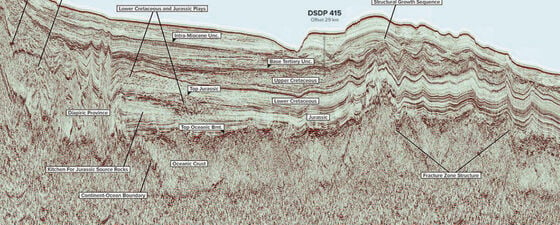The oil price fluctuated a few percentage points up and down through March giving the industry occasional cause for optimism followed by disappointment.
The oil price fluctuated a few percentage points up and down through March, with Brent ranging between US$37-43 through the month, and was up to $45 by mid-April, giving the O&G industry occasional cause for optimism, sometimes followed by disappointment. The production over-supply situation, considered one of the primary causes of the initial price slide, seems to be undergoing a similar seesaw motion.
Small Non-OPEC Reduction Forecast
In its latest short term energy outlook, the US Energy Information Administration (EIA) announced that US crude production in March dipped to an average of 9 MMbopd, down from an estimated 9.4 MMbopd in 2015, and is forecast to reduce to an average 8.6 MMbopd for 2016 as a whole. And while non-OPEC production grew by 1.5 MMbopd in 2015, with most of the growth occurring in North America, the EIA believes that non-OPEC production will decline overall by 0.4 MMbopd in 2016 – the first drop since 2008 – followed by a further decline to about 8 MMbopd in 2017.
Monthly U.S. crude oil production (2010-2017). Vertical axis – MMbopd. (Source: EIA)
The majority of this reduction is expected to be a result of a drop in tight oil production in the ‘Lower 48’ states of the US, a resource which is, as the EIA says, “characterised by high decline rates and relatively short investment horizons, making it among the most price-sensitive production globally.” In the US, however, this is expected to be partially offset by production in the Gulf of Mexico rising to record highs by 2017, as projects planned before the current over-supply situation come onstream, although it is noted that some projects are delaying their start dates. The EIA forecasts production in the area will average 1.63 MMbopd in 2016, rising to 1.91 MMbopd by the end of 2017, by which time it is estimated it will account for over 20% of total US crude production.
Monthly oil production from U.S. federal Gulf of Mexico (2010-2017). Vertical axis – MMbopd. (Source: EIA)
Production in Canada, which totalled 4.5 MMbopd in 2015, is also expected to increase, by about 0.2 MMbopd in both 2016 and 2017, as a number of oil sands projects come onstream, including the Imperial Oil project and the Cenovus project, both scheduled for the end of 2016. A number of these projects were under development when oil prices began to fall in 2014.
Canadian crude oil and liquid fuels production (2010-2017). Vertical axis – MMbopd. (Source: EIA)
Among non-OPEC producers outside North America, the largest declines are forecast for the North Sea. After increasing in 2014 and 2015, (see Western Europe: Production Up – Exploration Down) production in this area is expected to return to its long-term decline-trend in 2016 and 2017, as the planned start of several projects will not be enough to offset the region’s steep natural decline rates.
Iran Pushes OPEC
Meanwhile, OPEC production averaged 31.6 MMbopd in 2015, up from 30.8 MMbopd the year before, led by increasing production in Iraq and Saudi Arabia.
In March 2016 increasing production from post-sanctions Iran, which produced 110 Mbopd more in March than February, meant that OPEC production continued this rise, to 32.38 MMbopd for the month. According to Platts, the growth in Iran’s production – 340,000 bpd since December – is actually less that had been predicted, at least by the country’s leaders, but is still enough to make an impact on the general supply situation. Much of it is being sold to Indian and Korean refiners.
Production from OPEC members Iraq and Angola also increased in March, by 30,000 bopd in each case, while it dropped in the UAE, Nigeria, Libya and Venezuela, although some of the decline was due to short term maintenance outages.
The EIA predicts that, assuming that the member countries do not collaborate on cutting production in the near future, then OPEC crude oil production will increase by 0.6 MMbopd in 2016 and by a further 0.5 MMbopd in 2017, the increase primarily led by Iran, Qatar and Iraq.
Non-OPEC crude oil and liquid fuels production growth. Vertical axis – MMbopd. (Source: EIA)
Further Reading
The Road to OPEC 1960 by Rasoul Sorkhabi, Ph.D
Holding 77% of world’s proven oil reserves and delivering 41% of production, this organization has a powerful place in our world. Here we review how OPEC began and rose to its current position.




